Nickel welding is a challenging task that requires precision and expertise. It is essential to understand the properties of nickel and its alloys, as they behave differently from other metals during the welding process.
MIG welding, also known as Gas Metal Arc Welding (GMAW), is a common method used to weld nickel and its alloys.
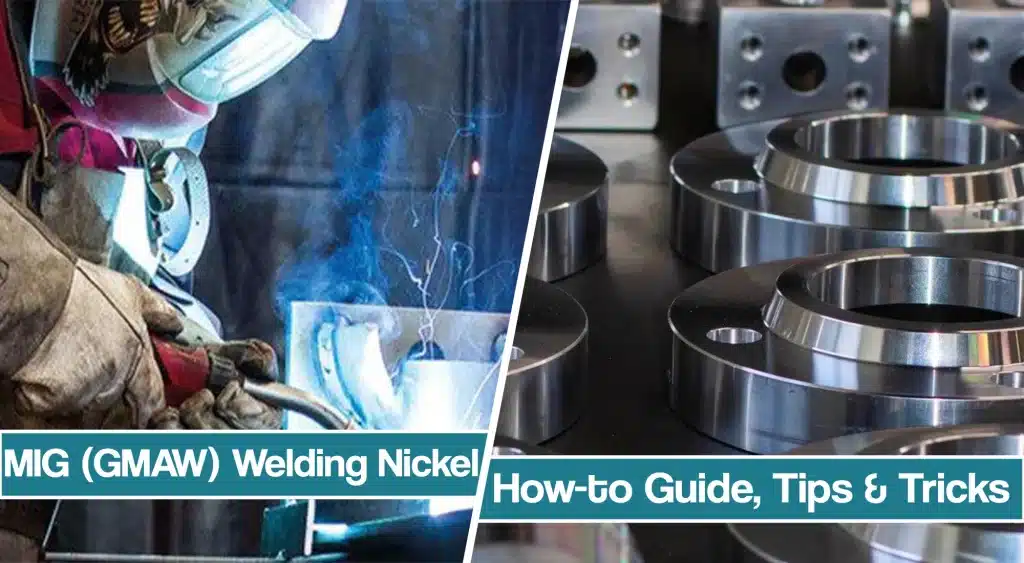
However, it requires specialized techniques and equipment to ensure successful welds. In this article, we will explore how to MIG weld nickel, the precautions to take, and the common mistakes to avoid.
What are the Properties Of Nickel and Nickel Alloys?
Nickel is a versatile metal with excellent properties such as high ductility, corrosion resistance, and good electrical conductivity. It is often alloyed with other metals to enhance its properties, resulting in a range of nickel alloys.
Nickel and its alloys are highly resistant to corrosion, even in harsh environments, similar to austenitic stainless steels. This property makes them ideal for use in chemical processing, power generation, and marine applications.
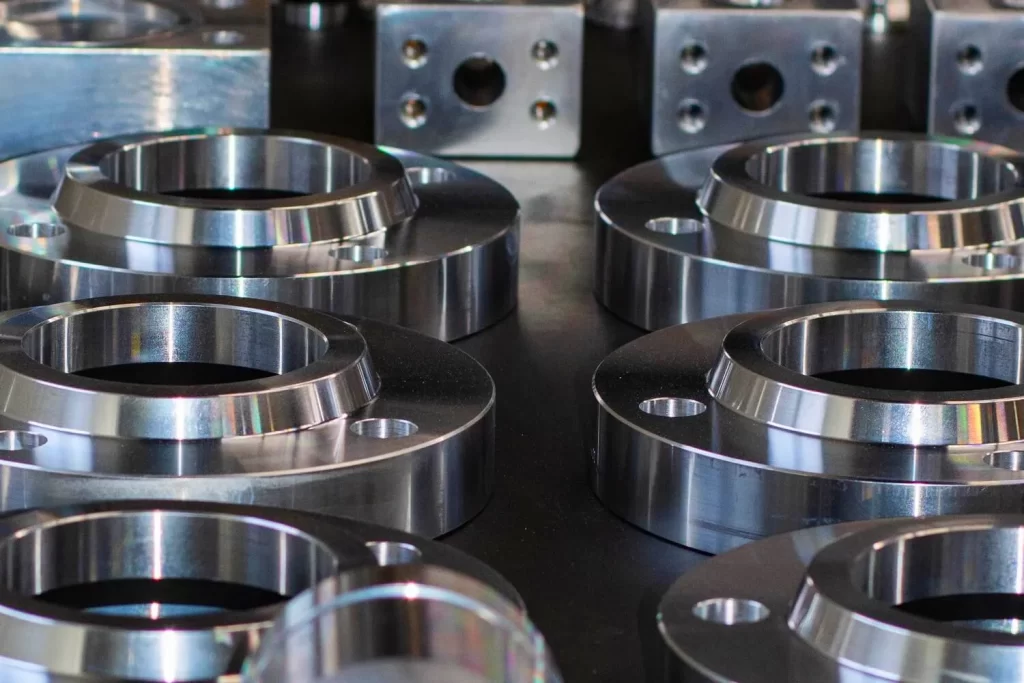
Additionally, they exhibit high-temperature strength, making them suitable for use in high-temperature applications, such as aerospace and power generation. Nickel and its alloys are highly ductile, which means they can be easily drawn into wires or other shapes without breaking.
This property makes them ideal for use in electrical applications. Some nickel alloys exhibit magnetic properties, making them suitable for use in magnetic components such as transformers and inductors. Certain nickel alloys are biocompatible, making them suitable for use in medical applications such as implants and surgical instruments.
Weldability Of Nickel And Welding Methods?
Nickel alloys have good weldability, making them easy to join using various welding techniques. There are several welding processes that can be used to weld nickel alloys, depending on the specific application and requirements. Some of the common welding methods used to weld nickel alloys include:
- TIG Welding (Gas Tungsten Arc Welding): Tungsten Inert Gas welding is a popular method used to weld nickel alloys. It produces high-quality welds with precise control over the heat input.
- MIG Welding (GMAW): Gas Metal Arc weld process is another common method used to weld nickel alloys. It is suitable for welding thick sections and can produce high deposition rates, where Shielded Metal Arc Welding cannot thrive, and Submerged Arc Welding (SAW), but only for solid-solution alloys..
- Plasma Arc Welding (PAW): Plasma arc welding is a highly precise welding method that can produce high-quality welds in nickel alloys.
- Resistance Welding: Resistance welding methods, such as spot welding, can be used to weld thin sheets of nickel alloys.
- Laser Welding: Laser welding is a highly precise welding method that can produce high-quality welds in nickel alloys. It is often used in aerospace and medical applications.
How To MIG Weld Nickel? – Overview
To MIG weld nickel alloys, it is important to select the appropriate filler wire, shielding gas, and welding parameters. A filler wire with a higher nickel content than the base metal is typically used, as it ensures good fusion and minimizes the risk of cracking.
The shielding gas used is typically a mix of argon and helium, which provides good arc stability and penetration.
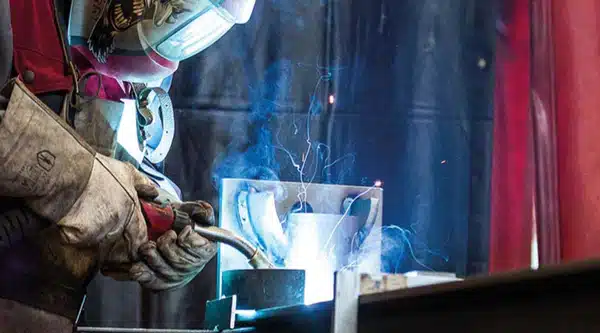
Before welding, the base metal should be cleaned thoroughly to remove any contaminants that could affect the weld quality. The joint should be properly prepared, and the fit-up should be tight to ensure good fusion.
During welding, it is important to maintain a stable arc and control the heat input to prevent distortion or cracking. The welding parameters, such as voltage, amperage, and wire feed speed, should be adjusted based on the material thickness and joint design.
After welding, the weld should be inspected for defects such as porosity or cracks. If necessary, the weld should be post-weld heat treated to relieve residual stresses and improve the mechanical properties.
What Is The Best MIG Filler Wire For Nickel Alloys?
When it comes to MIG welding nickel alloys, selecting the right filler metals is crucial to ensure a successful weld. The selection of the filler wire will depend on the specific nickel alloy being welded and the application requirements.
One of the most commonly used filler metal for MIG welding nickel alloys is ERNiCrMo-3. This wire is designed for welding nickel-chromium-molybdenum alloys such as Alloy 625, Alloy C276, and Alloy C22. ERNiCrMo-3 contains 62-69% nickel, 20-23% chromium, 8-10% molybdenum, and small amounts of other elements. This wire has good resistance to corrosion and high-temperature strength, making it ideal for use in chemical processing, power generation, and aerospace applications.
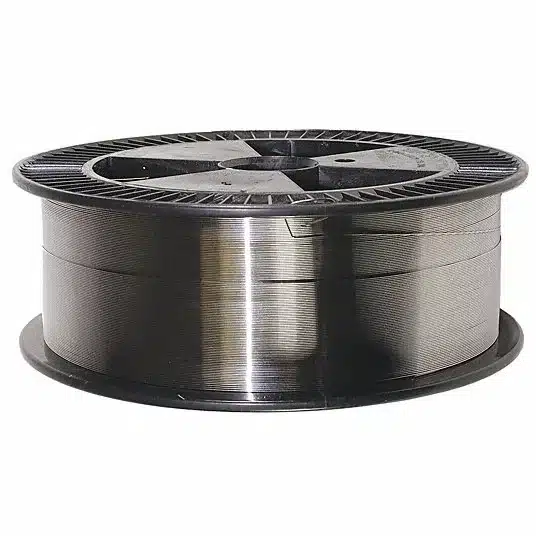
Another popular filler wire for MIG welding nickel alloys is ERNiCrFe-7. This wire is designed for welding nickel-chromium-iron alloys such as Alloy 600 and Alloy 800. ERNiCrFe-7 contains 62-71% nickel, 20-25% chromium, 4-5% iron, and small amounts of other elements (not carbon steel). This wire has good resistance to high-temperature oxidation and corrosion, making it ideal for use in power generation and chemical processing applications.
Other commonly used filler wires for MIG welding nickel alloys include ERNiCrMo-10, which is designed for welding Alloy C-276, and ERNiCrMo-13, which is designed for welding Alloy C-22 or nickel-copper alloys.
Both ERNiCu-7 and ERNiCrMo-3 nickel welding rods can be welded with either a spray transfer or pulse transfer MIG process. Spray transfer is the preferred option for precipitation-hardened alloys as it provides higher deposition rates compared to a pulse transfer process. When using a spray transfer process with these alloys, it is important to use a shielding gas with a higher percentage of argon in order to prevent porosity in the welds due to excessive nitrogen absorption from the atmosphere.
What Is The Best Shielding Gas Choice For MIG Nickel Welding ?
The best shielding gas for nickel and nickel alloy welding with MIG is a mixture of Argon and Helium. Argon shield gas an inert, non-flammable gas that provides a high level of arc stability and penetration. Helium is a lighter, more volatile gas that helps to increase arc energy and improve welding speed.
When combined, these gases provide the optimal balance of arc stability and welding speed for MIG welding nickel alloys.
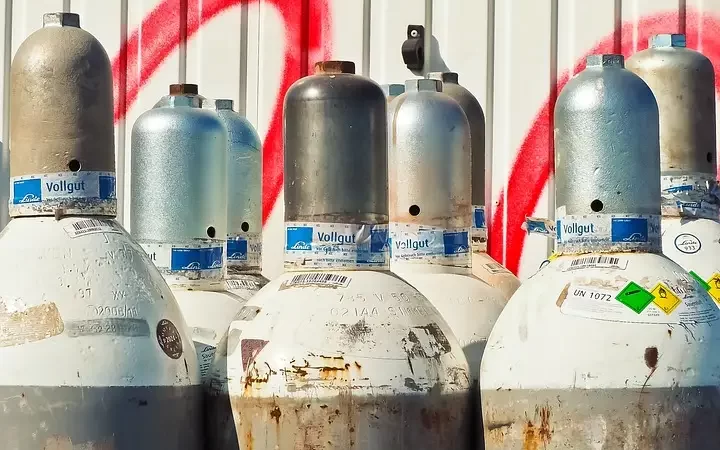
The most commonly used shielding gas for MIG welding nickel alloys is an Argon-Helium mix with a ratio of 75% Argon and 25% Helium. This mix provides excellent arc stability and weld penetration for most applications. It also has good shielding characteristics for preventing oxidation on the weld surface.
In addition to the Argon-Helium mix, some specialty applications may require different ratios or additional gases, such as Carbon Dioxide or Nitrogen, in order to optimize arc performance or reduce porosity in the welds. For example, when welding Inconel 718 (precipitation hardenable alloys) it is sometimes necessary to add small amounts of Carbon Dioxide in order to reduce porosity in the welds.
Weld Preparation
When MIG welding nickel and nickel alloys, proper weld preparation is essential for achieving a successful weld. The first step in the weld preparation process is to ensure that the surfaces to be welded are clean and free of contaminants such as oil, grease, rust, and scale. It is important to use appropriate cleaning methods such as chemical cleaning, mechanical cleaning, or abrasive blasting.
Square butt joints and beveled butt joints are two of the most commonly used weld preparations, depending on the thickness and alloying content of the material being welded. Preheating the material can help avoid stress corrosion cracking and reduce the risk of distortion, but it is not always necessary when MIG welding nickel. The temperature and duration of the preheat will depend on the specific material being welded and the thickness of the section.
Welding Technique For MIG Welding Nickel
When MIG welding nickel and nickel alloys, it is important to use the proper technique to ensure a strong and durable weld. The torch should be held at a consistent angle to ensure even penetration and proper fusion. A push technique is typically used, meaning the torch is pushed away from the weld pool.
Travel speed of the weld also plays a critical role in achieving a successful weld. The speed should be consistent throughout the weld to prevent overheating and distortion of the metal.
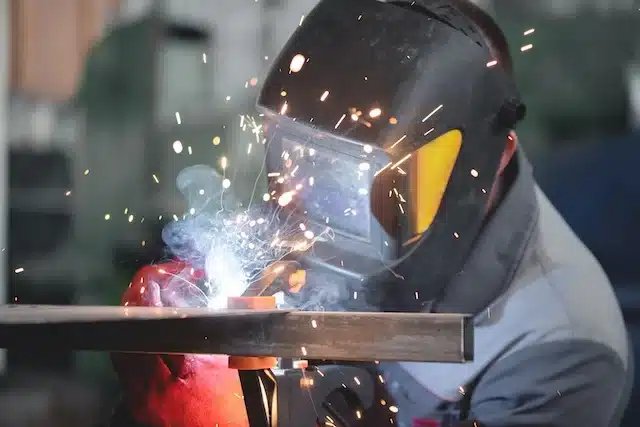
The appropriate speed will depend on the thickness of the material and the specific alloy being welded. In general, a travel speed of 2-3 inches per minute is a good starting point for MIG welding nickel alloys.
The appropriate weld parameters will depend on the specific alloy being welded and the thickness of the material. A general starting point for MIG welding nickel alloys is to use a current of 150-200 amps and a voltage of 20-24 volts, less than stainless steel. The wire feed speed should be adjusted to achieve the desired travel speed and good penetration.
Post Weld Treatment
Post-weld treatment for nickel and nickel alloys is an important step in ensuring a strong, long-lasting weld. Post-weld treatment can involve several different processes depending on the type of welding and alloy used. Generally, post-weld treatment involves stress relieving, annealing, and/or pickling.
Stress relieving is an important step in reducing distortion and residual stresses in the welded joint. This process is done by heating the joint to a temperature below the alloy’s recrystallization temperature, usually between 500°F – 1200°F (260°C – 650°C). The joint should be heated slowly and evenly to prevent any further warping or cracking. After the joint has been heated to temperature, it should be allowed to cool slowly in air or water.
Annealing is another important post-weld treatment for nickel alloys. Annealing is done by heating the welded joint to its recrystallization temperature, usually between 1600°F – 1800°F (870°C – 980°C). The purpose of this process is to restore the mechanical properties of the alloy by allowing it to regain its original crystal structure. Once the desired temperature is reached, the joint should be cooled slowly in air or water.
Pickling is a post-weld treatment that involves removing surface contaminants such as oxides and scale from the welded joint. It can also help to reduce porosity and improve corrosion resistance. Pickling solutions are typically made from a mixture of nitric acid and hydrofluoric acid, which should be handled with care as they are highly corrosive.
Potential Issues When MIG Welding Nickel Alloys
When MIG welding nickel and nickel alloys, one of the primary issues that can occur is porosity. Porosity is caused when gas bubbles are trapped within the weld metal, resulting in a weaker weld joint. This is usually caused by an incorrect welding setting, a dirty surface, or a lack of shielding gas. Porosity can also be caused by using incorrect welding techniques, such as failing to maintain the right travel speed or using too much current.
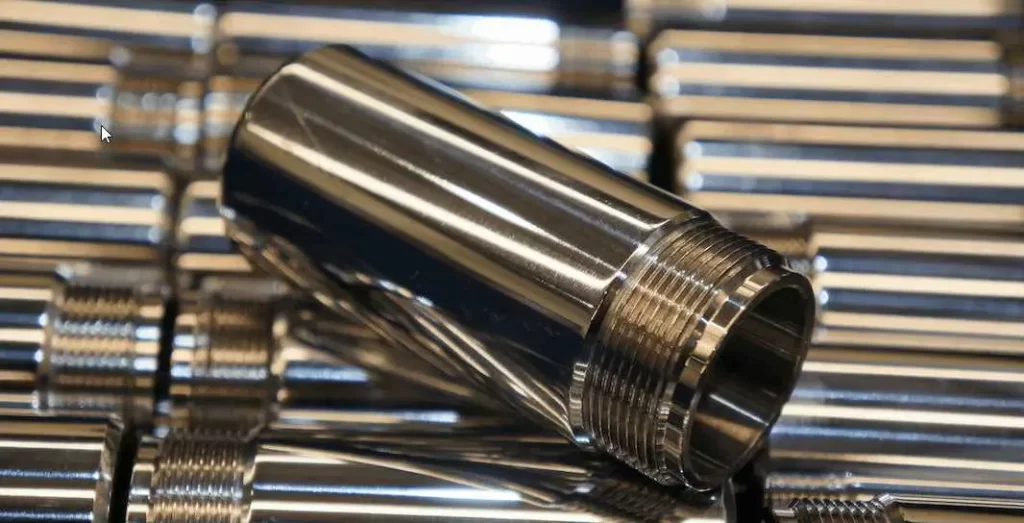
Another common issue that can arise is insufficient penetration. Insufficient penetration happens when the weld pool does not completely fill the joint, resulting in a weak weld joint. This can be caused by an incorrect welding setting, an inadequate number of passes, or an improper technique.
Cracking, slag inclusion, spatter, and undercutting of nickel are other potential issues. Cracking usually occurs due to rapid solidification of the weld metal and can be prevented by controlling the heat input and pre-heating the base material where necessary. Slag inclusion occurs when molten slag from previous passes gets trapped in the weld metal, resulting in a weaker joint. This can be prevented by cleaning each pass before welding it. Spatter is caused by excessive heat input resulting in droplets of molten metal being thrown off from the arc. To prevent spatter, it is important to adjust the welding parameters correctly and use appropriate techniques.
Quick Tips For MIG Welding Nickel And Nickel Alloys
- Here are some quick tips for successful MIG welding of nickel and chromium bearing nickel alloys:
- Select the appropriate filler wire and shielding gas for the specific nickel alloy being welded.
- Clean the weld area thoroughly to avoid contamination and porosity.
- Use proper welding parameters, such as amperage, voltage, and travel speed, to achieve the best results.
- Maintain a consistent arc length and angle of the welding rod during welding to ensure proper fusion.
- Use a joint design that minimizes stress concentrations and promotes full penetration of the weld.
- Preheat the material if necessary to avoid cracking and distortion.
- Post-weld heat treatment may be required for certain nickel alloys to relieve residual stresses.
- Practice good welder technique and maintain a steady hand to prevent undercutting and distortion.
- Use high-quality welding equipment and consumables to achieve the best results and restore corrosion resistance.
Conclusion
MIG welding nickel alloys can be a challenging process, but with the right techniques and materials, it can be done successfully. Proper filler wire, shielding gas, and welding parameters must be used to achieve strong, high-quality welds.
It is also important to properly clean the weld area, use appropriate joint designs, and pre-and post-heat treatment when necessary to prevent issues in the heat-affected zone, such as porosity, cracking, incomplete fusion, undercutting, and distortion. By following these tips, you can ensure the success of their MIG welding of nickel alloys and produce strong, reliable welds.
Resources
- https://www.twi-global.com/technical-knowledge/job-knowledge/weldability-of-materials-nickel-and-nickel-alloys-022
- https://www.weldingtipsandtricks.com/metals-and-how-to-weld-nickel.html
- https://weldreality.com/STEELS%20NICKEL%20ALLOYS.htm
- https://www.nickel-alloys.net/article/welding-of-nickel-alloys.html





